.png.transform/rendition-xs/image_image%20(1).png)
St. James Way: 5 Cities, 5 Bars, 5 Tapas
Nature, culture, spirituality, monuments and history… There are infinite reasons why one would choose to follow the ancient itinerary known as the St. James Way or the Way, as it meanders across northern Spain. Not least among these can be the excellent gastronomy that is found along this historic route. Here we have selected five cities, five bars or restaurants and five tapas (also known as pintxos or pinchos) along the way that are sure to nourish the body, tantalize the palate and satisfy the soul.
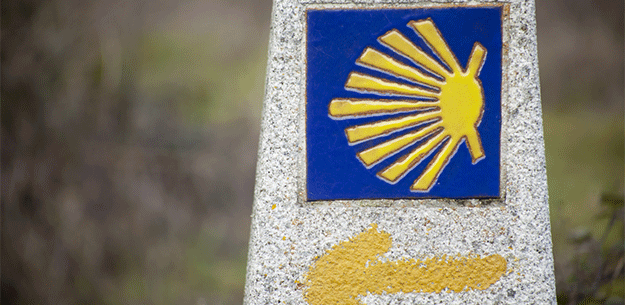
Text: Adrienne Smith/@ICEX.
Followed by pilgrims from near and far since the 9th century, the principle route of the Camino de Santiago runs from east to west across northern Spain, starting in the Pyrenees and ending in the Galician city of Santiago de Compostela, where the remains of the saint are buried. Hundreds of thousands of people travel some or all of this route every year, taking in spectacular landscapes that are highlighted by some of the most historic cities in Spain: Pamplona (Navarre), Logroño (La Rioja), Burgos and León (Castile-León) and, of course, Santiago de Compostela, Galicia.
Aside from their stunning cathedrals, enduring monuments and the historic echoes of their ancient streets, these five cities also share a love of gastronomy that is embodied by the preservation of age-old culinary traditions and the emergence of new and innovative flavors. Spanish tapas are envisioned as temples to the finest ingredients, combined and arranged with an extra touch of flair. The one tapa constant? Quality is always king. The following are just a few suggestions to get you started on a contemporary gastronomic journey along one of the world’s most famous routes.
Bar Gaucho, Pamplona, Navarre
Calle Espoz y Mina, 7
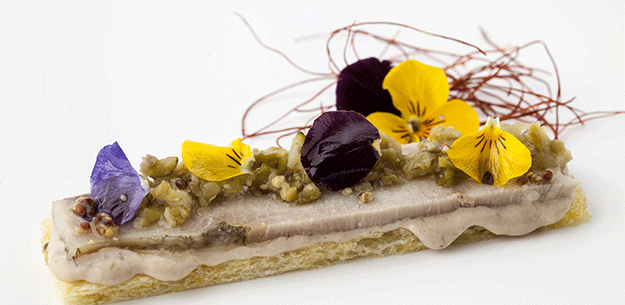
Located in the heart of the city’s historic quarter just off the Plaza del Castillo, this tapas bar has probably won more awards for its pintxos over the years than any other in the city. The tapas, many of which are showcased under glass atop the bar of this typically packed establishment, have a sophisticated, yet traditional feel – often combining typical flavors of Navarre in unexpected and tempting ways. It is nearly impossible to choose only one. Even so, the Esturión “per sé de Navarra” en dos texturas (two textures of Per Sé sturgeon from Navarre), farmed in the foothills of the Pyrenees Mountains, is a must, mingling the meat and roe of this fish under a thin veil of edible flower petals. Combine it with a crisp glass of rosado wine from DO Vinos de Navarra for the perfect pairing.
Bar Soriano, Logroño, La Rioja
Travesía del Laurel, 2
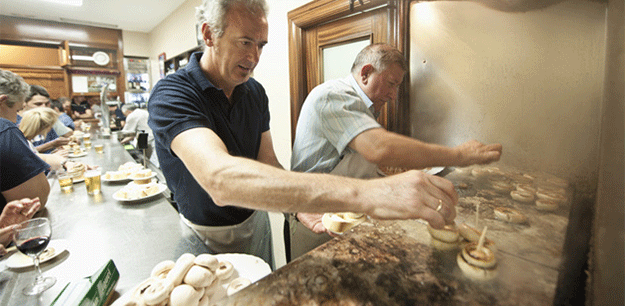
Located on the city’s mythical tapa-hopping street Calle Laurel, Bar Soriano is a Logroño classic, founded in 1972 by a family whose lives changed forever when they created the now-iconic pincho, Champiñon con gamba a la plancha (grilled mushrooms with shrimp). The secret is apparently in the toothpick that holds this towering tapa together. Grilled whole mushrooms are skewered by a garlicky shrimp, which in turn fastens the entire creation to the thick slice of white baguette below. Deceptively simple and mouthwateringly delicious, accompany it with a glass of young red DOCa Rioja wine.
La Favorita, Burgos, Castile-León
Calle Avellanos, 8
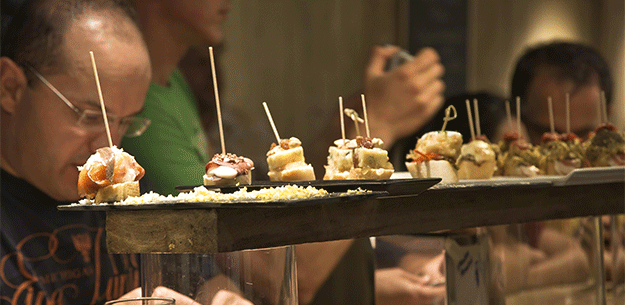
This popular bar and restaurant serves up tapas with a twist, taking traditional ingredients and presenting them in a carefully curated selection of bite-sized parcels. Although the city’s morcilla, or blood sausage, is a must-try while in Burgos, here we opt for the Crujiente de chistorra con huevo de codorniz y fritada de tomate y pimiento (crunchy sausage with quail egg and fried tomatoes and peppers). This hearty tapa is the perfect combination of pantry and vegetable garden, and stands up wonderfully well to a glass of the region’s red wine par excellence: a full-bodied DO Ribera del Duero made from Tinta del País (Tempranillo) grapes.
Bar Rúa 11, León, Castile-León
Calle Rúa, 11
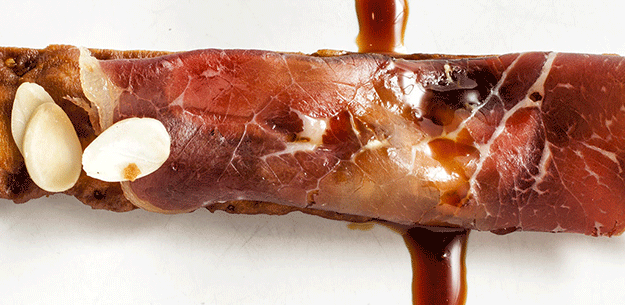
Follow the golden scallop shells embedded in the streets of this historic city – indicating the route of the Camino de Santiago as it passes through León past the door of this bright and welcoming bar, whose modern, simple decor with vintage touches in a nod to the 1950s. This is particularly evident in the eye-catching display of dozens of vermouth bottles behind the bar. Look more closely, however, and you’ll find that these bottles aren’t museum pieces, but rather brands of vermouth from all over Spain that have embraced the trend of retro, colorful labels and old school style. Unsurprisingly, the bar is known for its vermouth cocktail, a secret concoction that won the citywide competition for the best such cocktail in 2017. As is the tradition in this food-loving city, with each drink you get to choose from a selection of delicious free tapas. Be sure to try the Rollito cecina con queso y manzana made with the excellent, regional IGP Cecina de León (cured, smoked beef with cheese and apple). And if vermouth isn’t your thing, a white Godello or red Mencía wine from DO Bierzo will do quite nicely.
Abastos 2.0, Santiago de Compostela, Galicia
Praza de Abastos, Ameas Casetas, 13-18
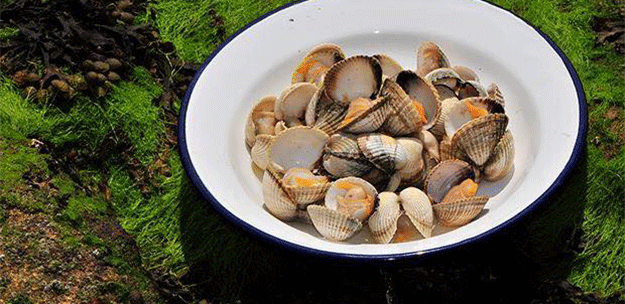
Opened in late 2009 by Marcos Cerqueiro and Iago Pazos, this tiny tapas bar occupies a few stands in Santiago’s central Mercado de Abastos city market, and spills into the street outside. You won’t find any walk-in refrigerators here; the food comes directly from the market, with emphasis on heart-stoppingly fresh seafood like erizos (sea urchins), navajas (razor clams), mejillones (mussels), almejas (clams), pulpo (octopus), etc.; complimented with seasonal vegetables, greens or whatever else strikes the chefs’ fancy at the market on any given day. Although the changing menu makes it impossible to recommend any one dish, no celebration of one’s arrival at the end of the Camino would be complete without a stop at this gastronomic mecca.


